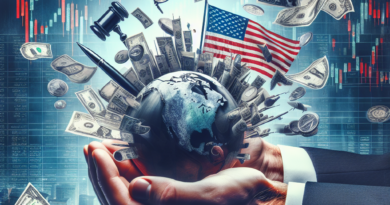How to diversify your investments in a no landing scenario?
Investors are optimistic that the soft landing/no landing scenario will be achieved but there is a difference of opinion on how aggressive the Federal Reserve will be in cutting interest rates.
UBS predicts, for example, that the Fed will start cutting rates in March 2024 to bring them between 2.5% and 2.75% by the end of next year (the Swiss bank has a recessionary scenario).
Morgan Stanley believes that the American central bank will begin to tighten monetary policy from June, then again in September and then every month of the last quarter, bringing rates around 2.4%.
Goldman Sachs is the most conservative, believing that the Fed will only cut rates by 25 bps in the fourth quarter of next year, followed by other quarterly cuts until mid-2026 with rates reaching around 3.5%-3.75%.
The American institute in fact believes in the "no landing" scenario.
Trying to find a key to understanding the future in a complex global macro picture, the first effect of the market rebound is that financial conditions in the USA have eased.
This creates a stimulative financial condition with positive effects on economic growth over time, although it must be assessed whether these conditions have taken on a clear stimulatory position or whether it is currently a simple easing of the pressures of the restrictive monetary cycle.
However, nominal US GDP growth appears rather robust and too high to justify an aggressive cut in interest rates.
In fact, the underlying growth dynamics still seem rather solid, the current decline in inflation and the increase in continuous requests for unemployment benefits seem to have occurred more due to a normalization from excesses (energy prices, companies starting to cut costs because they are unable to pass these on to the consumer while preserving margins).
Wage growth has long been above pre-Covid levels with signs of stabilization at current levels, suggesting that unless there is an intense deterioration in the labor market, income growth remains too high for the Fed to hope that the inflation falls to the set target.
In addition, the American consumer remains richer than before the pandemic and this is the real reason why consumption remains high despite the significant increase in financing costs.
In fact, the market-priced odds of a recession have decreased to 40%-45%.
It is true that US companies do not enjoy a good financial condition but it is also true that current and prospective corporate bankruptcies are increasing slowly and not in a disorderly manner.
So, what are the most likely scenarios between no landing, soft landing and recession? Probably the first and third are while the second, historically, is a hypothetical scenario that precedes the recession.
Bearing in mind that the current inflation context of the major economies is mainly due to the ultra-expansive fiscal policies of the pandemic period and secondarily by the monetary ones, if US fiscal policy were to remain as expansive as it currently is (and it is likely that it will remain so in view of the local elections) the non-recession scenario hypothesized by Goldman Sachs could be the one with the greatest probability of realization.
The recession scenario is also possible because the restrictive monetary policies began too late and the probability of a further policy mistake is high.
The extent of a regime change like the current one (from deflation/zero rates to inflation/higher rates) is yet to be verified but it could lead to some shocks, especially of a financial nature.
However, if markets are hoping for monetary easing, does this mean stock markets go up? We cannot say with certainty because it depends on the reasons that push central banks to cut rates and how much they are priced by the market.
The no landing scenario could also lead central banks to make the mistake of having beaten inflation when in reality it fell due to normalization factors rather than for reasons of cooling the economy, triggering a second wave of inflation ( as happened in the 1970s).
Keeping these two scenarios in mind, value stocks remain preferable at an allocation level where it is easier to find companies that are resilient to both macro environments.
On bonds, in the no landing scenario, High Yield is preferable to Investment Grade because it is more sensitive to economic growth and less to rates, while in the second case the opposite would be preferable.
In general, for the current context the duration can be lengthened but not excessively because the no landing scenario is particularly unfavorable for long-term bonds while the recession has already been partly priced in given the sharp movement in yields.
On the commodities side, gold and silver still remain interesting for both scenarios while some agricultural goods price the still strong consumption of primary goods.
Uranium can represent a bet on the energy transition by betting on increased demand and tight supply that is expected to lead to a deficit in the coming year.
From the point of view of strategies, multi-asset ones can offer useful diversification in these scenarios while long-short ones can be successful if volatility were to increase which in both cases has a good possibility of verification.
Directional strategies can be indicated on specific themes and geographical areas, what has been seen above is true for the US economy but other global areas are in a different position.
China is in a particularly challenging context and at the moment does not have particular appeal due to purely macro factors and fiscal/monetary policies, from the point of view of valuations several Chinese companies are cheap (similar discussion for emerging markets, mostly driven by Chinese conditions).
Europe is more oriented towards the recessionary scenario for next year but it could lead to a prolongation of the stagflationary scenario glimpsed so far.
For bonds, flexible strategies capable of generating alpha by moving the portfolio duration would be preferable because both scenarios are favorable to these types of strategies.
On the directional side, short-term strategies that generate short-term returns are preferable.
read also Defense, the three actions to ride the increase in military spending




